Advanced Search
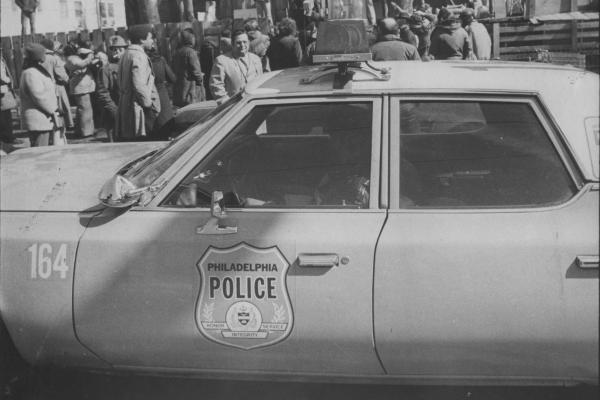
The Powelton Village MOVE house under police surveillance in February 1978.
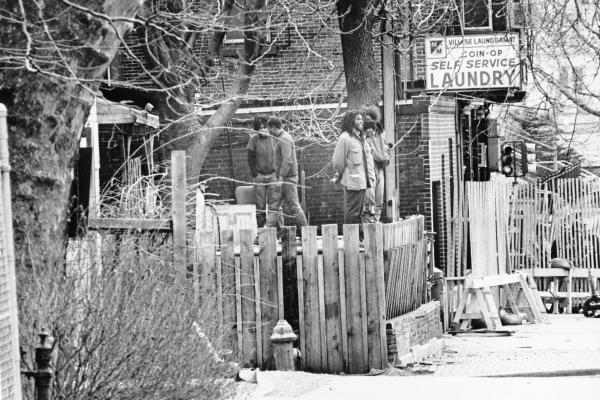
MOVE members looking things over at their barricaded Powelton Village house in March 1978.
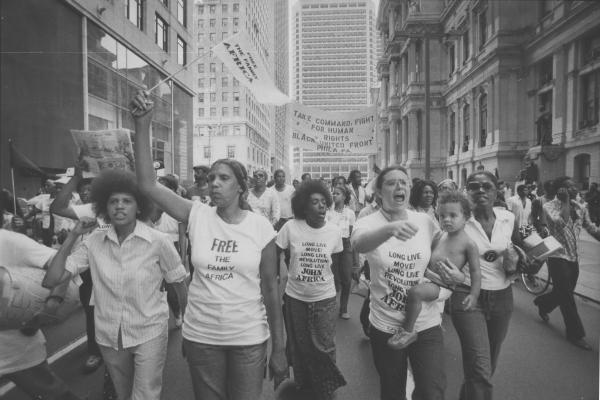
MOVE demonstrators marched to City Hall in August 1979 to protest the imprisionment of members charged with murdering a police officer during a confrontation in Powelton Village the previous year.
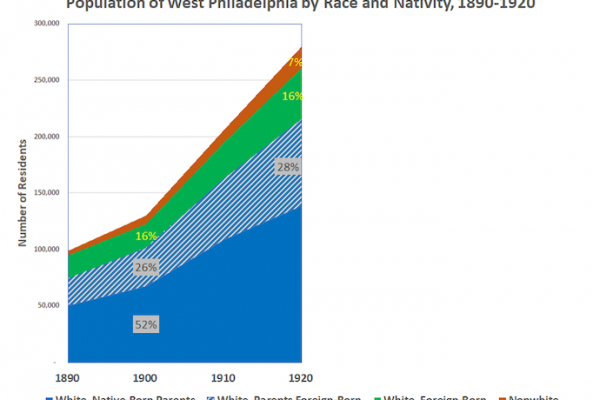
In 1920, the foreign-born and the children of immigrants were almost half of West Philadelphia’s population.
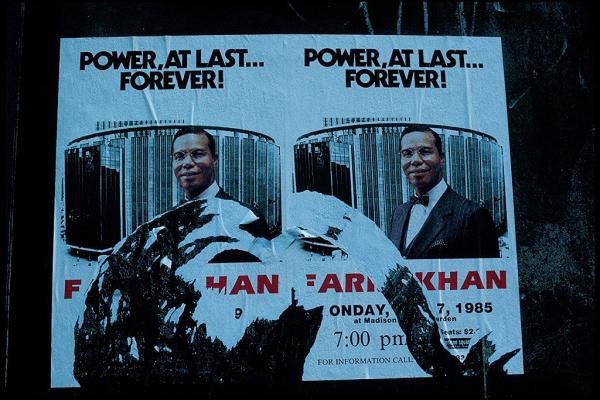
An image of Louis Farrakhan, controversial leader of the Nation of Islam, on a rally poster in 1985. Born in New York City in 1933 with the name Louis Eugene Walcott. After Elijah Muhammad’s son Wallace D. Muhammad reorganized the Nation of Islam as the Sunni Muslim Society of American Muslims, Farrakhan claimed Elijah’s mantle and his group adopted the name “The Nation of Islam” in 1981. Antiwhite separatism and anti-Semitism, consistent with Elijah Muhammad’s theology, mark Farrakhan’s version of NOI.
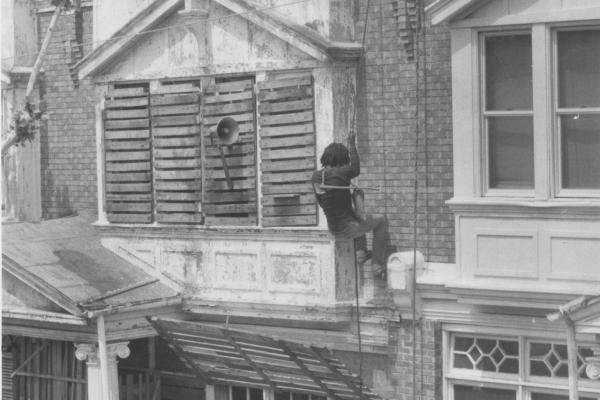
Two loudspeakers and the rooftop bunker (target of a satchel bomb dropped from a police helicopter during the siege of May 13th) are visible on the facade of the fortified MOVE house at 6221 Osage Avenue in late April 1985.

Firefighters attempted to douse the raging fire on May 13, 1985, but city officials had already allowed the fire to burn to the point that it could no longer be contained.
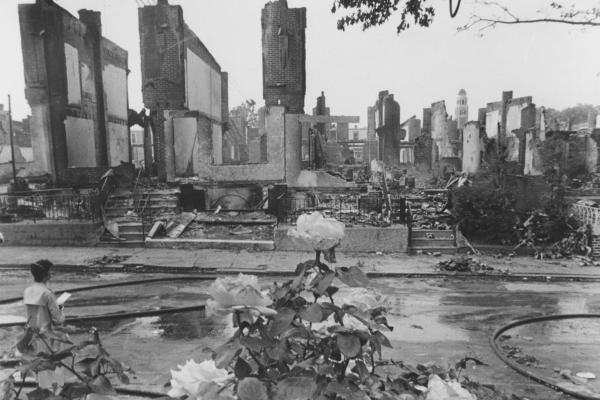
Fire-tinged flowers on Pine Street in the aftermath of the fire in which eleven MOVE members died and 51 houses were destroyed on May 13, 1985.
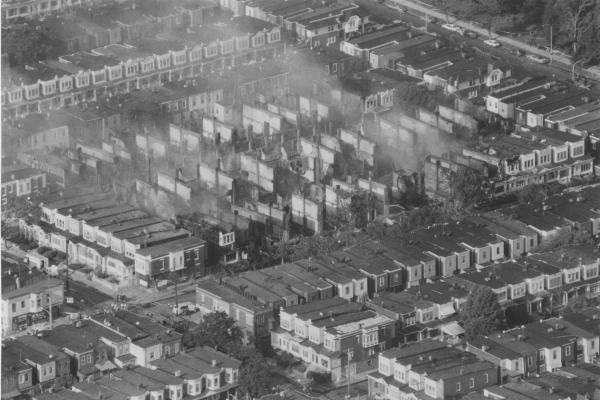
Aerial view of the devastation caused by the MOVE fire of May 13, 1985, which killed 11 members of the MOVE organization and destroyed 61 homes in the blocks of Osage and Pine streets above Cobbs Creek Park.
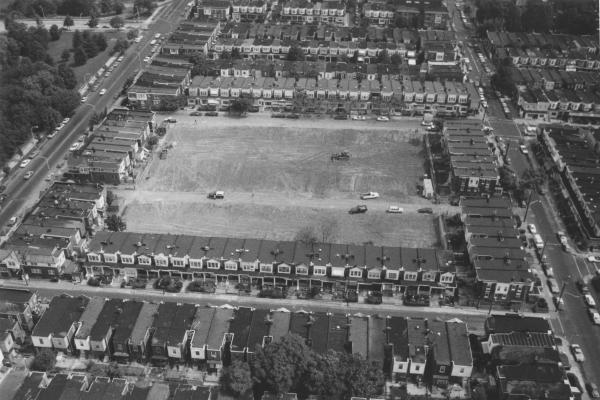
Houses on Osage and Pine Streets destroyed in the 1985 MOVE fire were leveled by the city by summer.

From 1961–1989, this remnant wall and strip of once-patrolled land represents a section of the border that existed between East and West Berlin from 1961–1989. East Berlin belonged to the German Democratic Republic (GDR), a Soviet Union satellite. On Paul Robeson’s 70th birthday, April 9, 1968, the GDR established a Paul Robeson Archive.
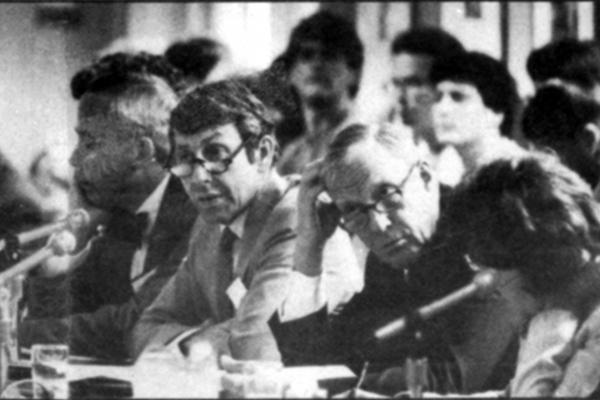
Sheldon Hackney (second from left) discusses divestment in apartheid South Africa in 1986. Student protests for divestment were part of the turbulent campus politics Hackney experienced during his tenure as President of the University of Pennsylvania.